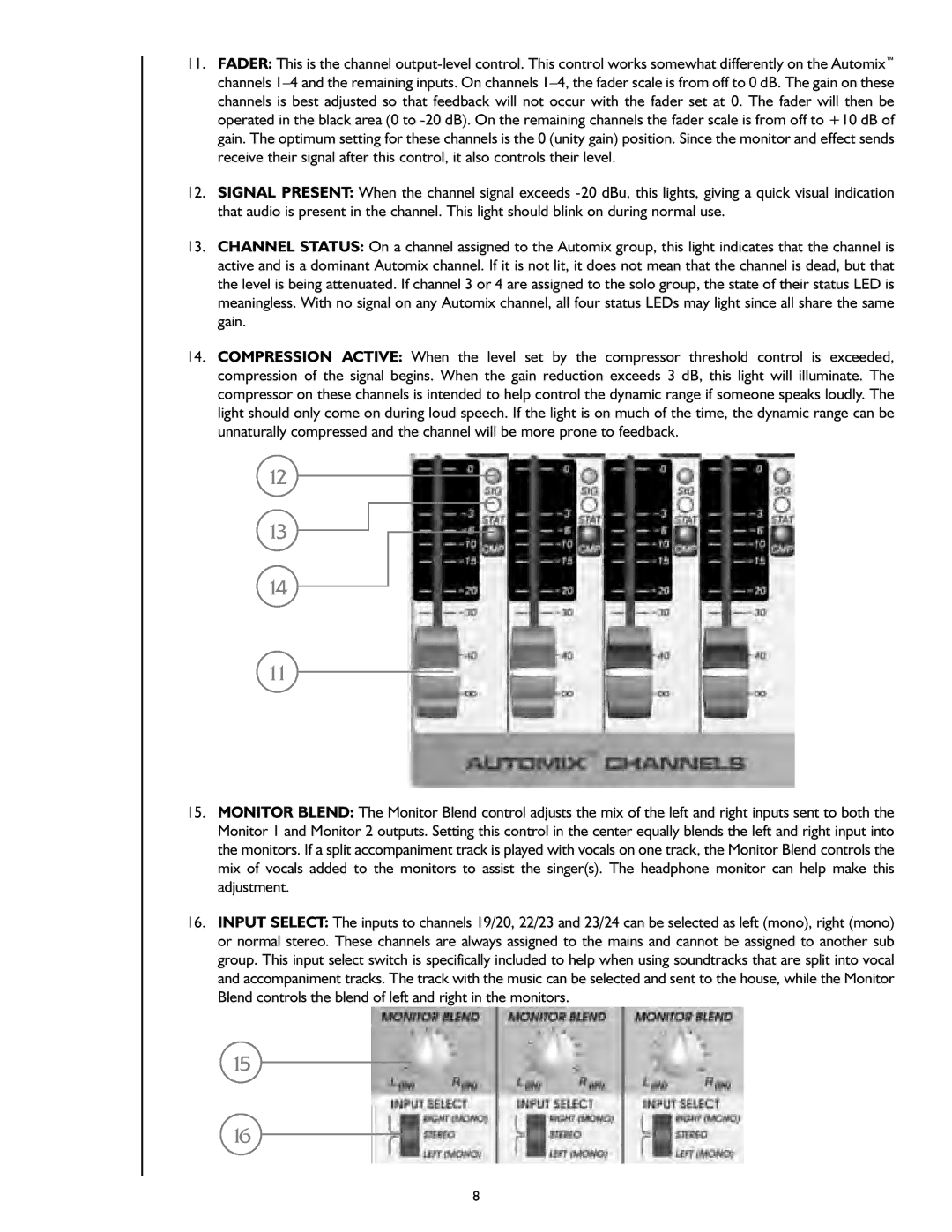
11.FADER: This is the channel
12.SIGNAL PRESENT: When the channel signal exceeds
13.CHANNEL STATUS: On a channel assigned to the Automix group, this light indicates that the channel is active and is a dominant Automix channel. If it is not lit, it does not mean that the channel is dead, but that the level is being attenuated. If channel 3 or 4 are assigned to the solo group, the state of their status LED is meaningless. With no signal on any Automix channel, all four status LEDs may light since all share the same gain.
14.COMPRESSION ACTIVE: When the level set by the compressor threshold control is exceeded, compression of the signal begins. When the gain reduction exceeds 3 dB, this light will illuminate. The compressor on these channels is intended to help control the dynamic range if someone speaks loudly. The light should only come on during loud speech. If the light is on much of the time, the dynamic range can be unnaturally compressed and the channel will be more prone to feedback.
12
13
14
11
15.MONITOR BLEND: The Monitor Blend control adjusts the mix of the left and right inputs sent to both the Monitor 1 and Monitor 2 outputs. Setting this control in the center equally blends the left and right input into the monitors. If a split accompaniment track is played with vocals on one track, the Monitor Blend controls the mix of vocals added to the monitors to assist the singer(s). The headphone monitor can help make this adjustment.
16.INPUT SELECT: The inputs to channels 19/20, 22/23 and 23/24 can be selected as left (mono), right (mono) or normal stereo. These channels are always assigned to the mains and cannot be assigned to another sub group. This input select switch is specifically included to help when using soundtracks that are split into vocal and accompaniment tracks. The track with the music can be selected and sent to the house, while the Monitor Blend controls the blend of left and right in the monitors.
15
16
8
